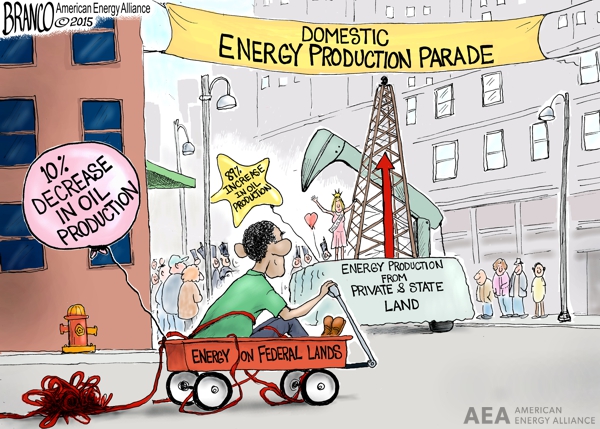'Saudi America' Becomes World's Leading Oil & Gas Producer
For the United States, 2013 has been the year of energy. Last month, the Energy Information Administration (EIA) announced that crude oil reserves were at their highest levels in more than two decades. Now EIA reports that the U.S. will surpass Russia and Saudi Arabia to become the world’s number one combined producer of oil and natural gas.
Recent technological advancements in the U.S. that combine hydraulic fracturing and horizontal drilling have unlocked vast shale resources that were previously inaccessible. This shale energy boom, which is occurring on state and private lands, is reshaping the geopolitical landscape.
According to EIA, U.S. petroleum and natural gas production will reach nearly 50 quadrillion British thermal units (Btu) in 2013, outpacing Russia by 5 quadrillion Btu. Since 2008, U.S. petroleum production has increased 7 quadrillion Btu, while natural gas output has grown 3 quadrillion Btu. In comparison, Russia and Saudi Arabia each increased their combined hydrocarbon production by 1 quadrillion Btu over the same period.
America’s shale energy boom is nothing short of historic. In 2011, U.S. proved oil reserves increased 15 percent (3.8 billion barrels) to the highest levels since 1985, according to EIA. U.S. proved natural gas reserves grew 10 percent in the same year, the second largest increase since 1977.
Source: Energy Information Administration
President Obama recently tried to take credit for America’s domestic energy boom. At a press conference about the government shutdown, Obama remarked that “for the first time in a very long time” the U.S. is exporting more oil than we’re importing. But this increase is occurring in spite of President Obama, not because of him. The increased production is occurring on state and private lands, not federal lands. Since 2010, oil production is down 18 percent and natural gas production is down 16 percent on federal lands. In fact, fossil fuel production on federal lands is at a 10-year low.
As the following chart explains, production on state and private lands, where the federal government has little input, is the driving force behind the U.S. energy renaissance.
The shale oil and gas boom on state and private lands would be occurring on federal lands, but for government red tape. In 2012, the Bureau of Land Management (BLM) took 228 days, on average, to approve permits to drill on federal lands, up from 154 days in 2005. In comparison, it took 20-30 days for North Dakota, 14 days for Ohio, and 27 days for Colorado to process similar permits to drill on state lands. By slow walking drilling permits, BLM is costing Americans jobs, the Treasury revenue, and the country affordable energy.
Thanks to our domestic energy boom, America has displaced Russia and Saudi Arabia as the world’s leading producer of oil and natural gas. But it is important to point out that this boom is not occurring everywhere. State and private lands are driving production increases, while production on federal lands is at its lowest levels in a decade. America is an energy rich country, but our vast resources count for nothing if we keep them in the ground.
IER Intern Leah Whetstone authored this post.






